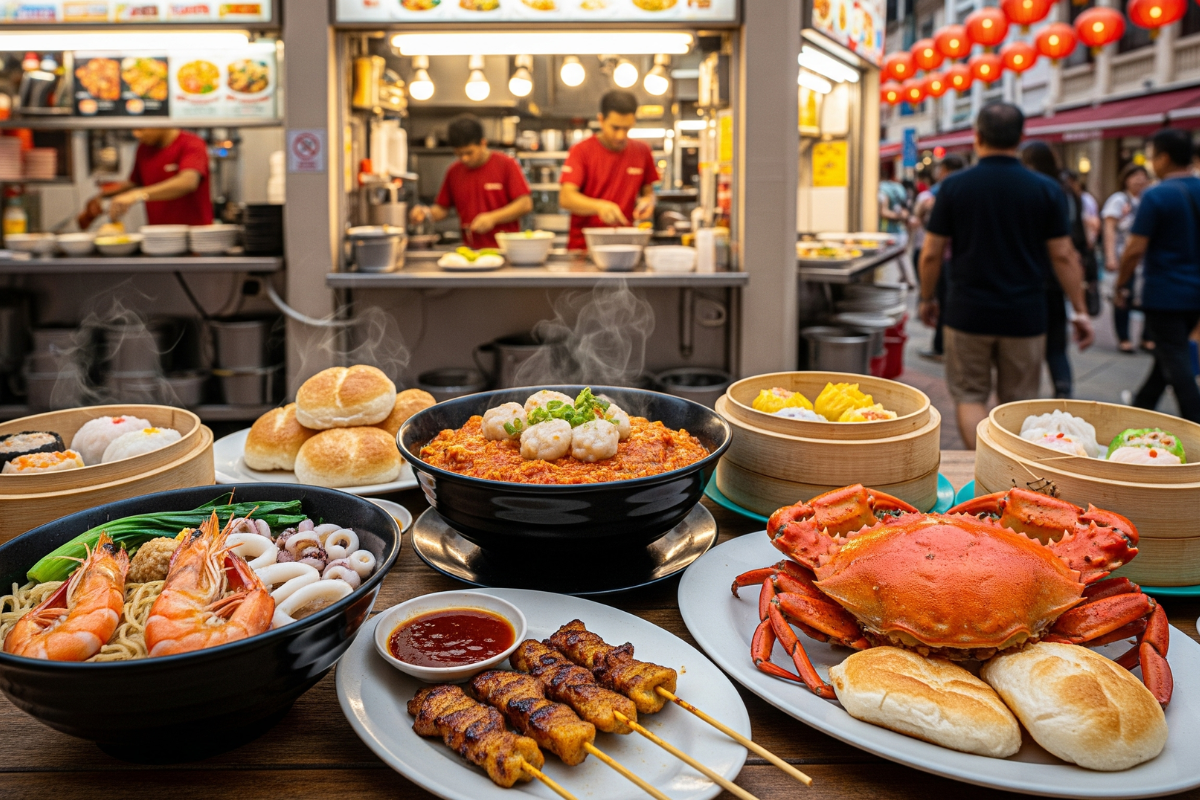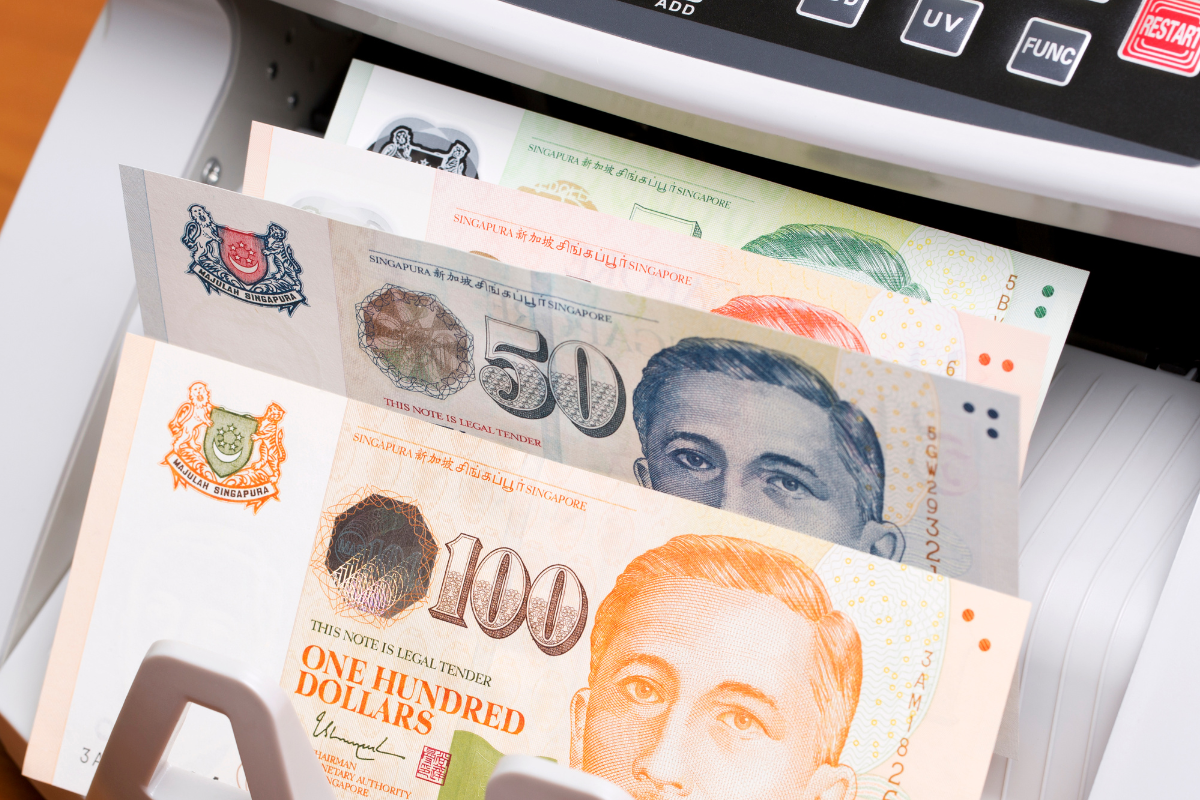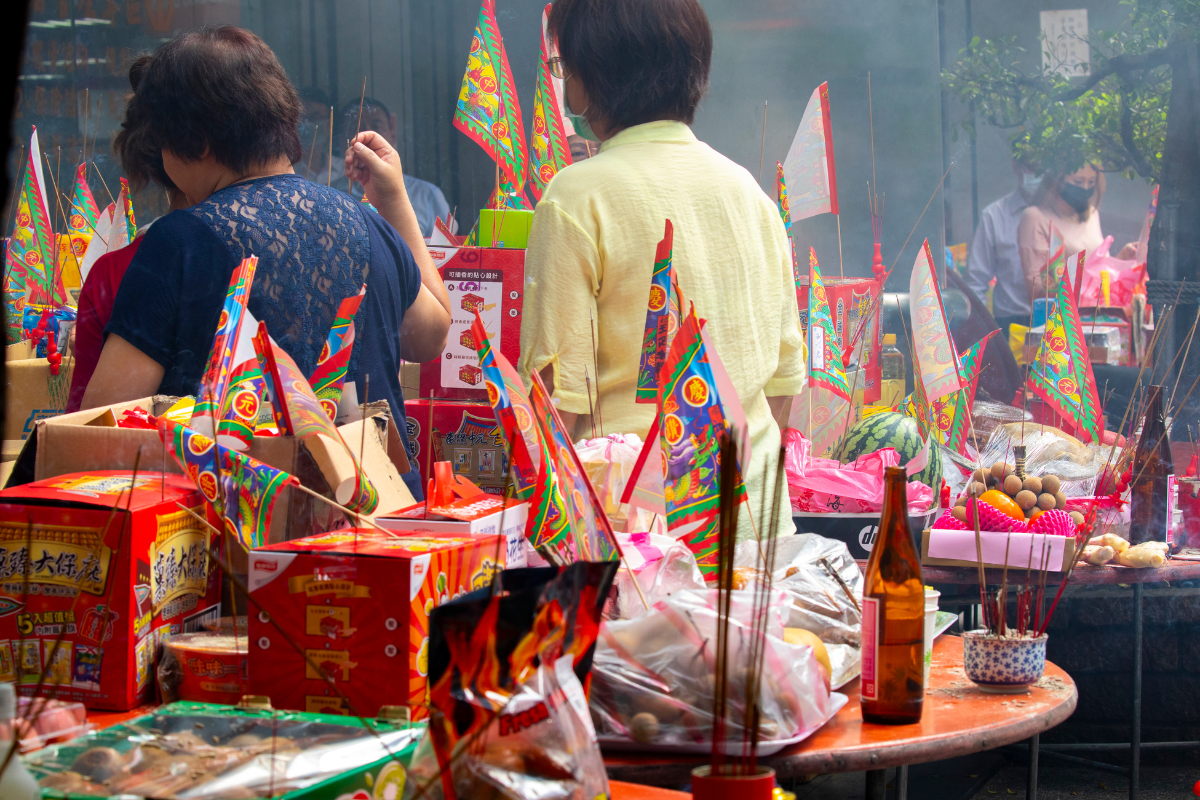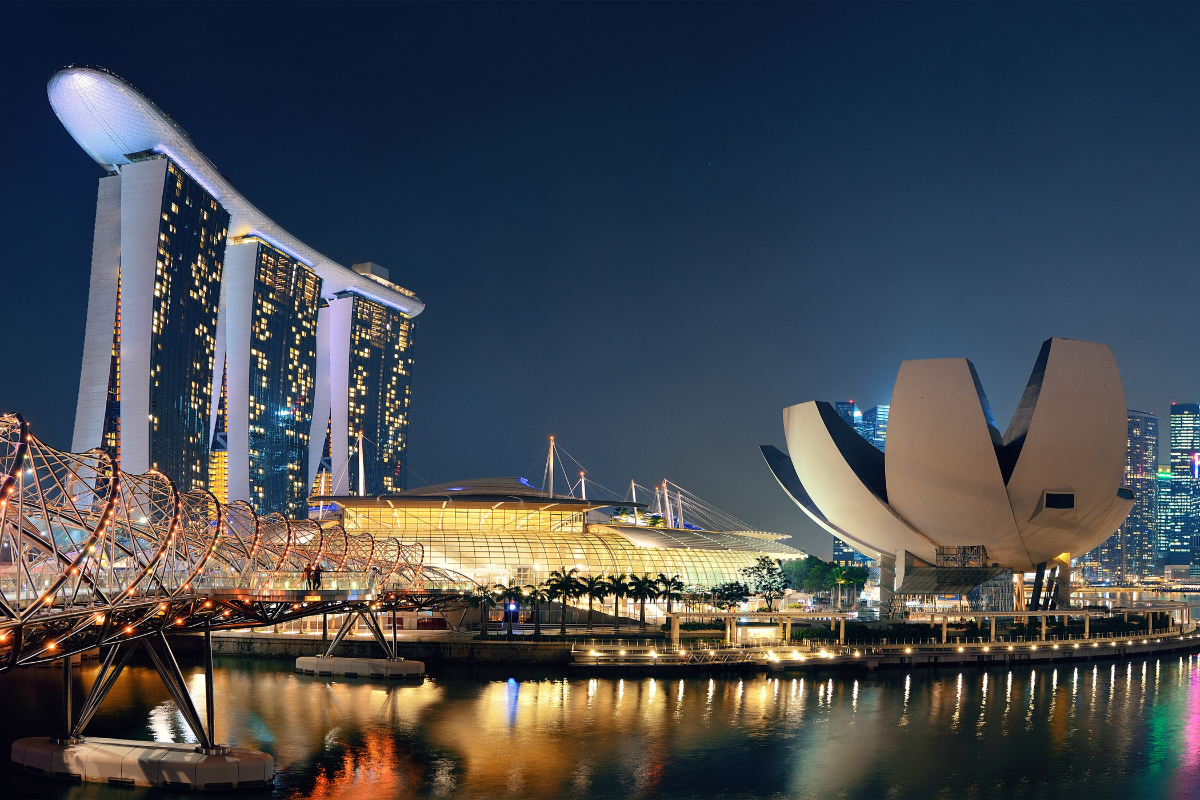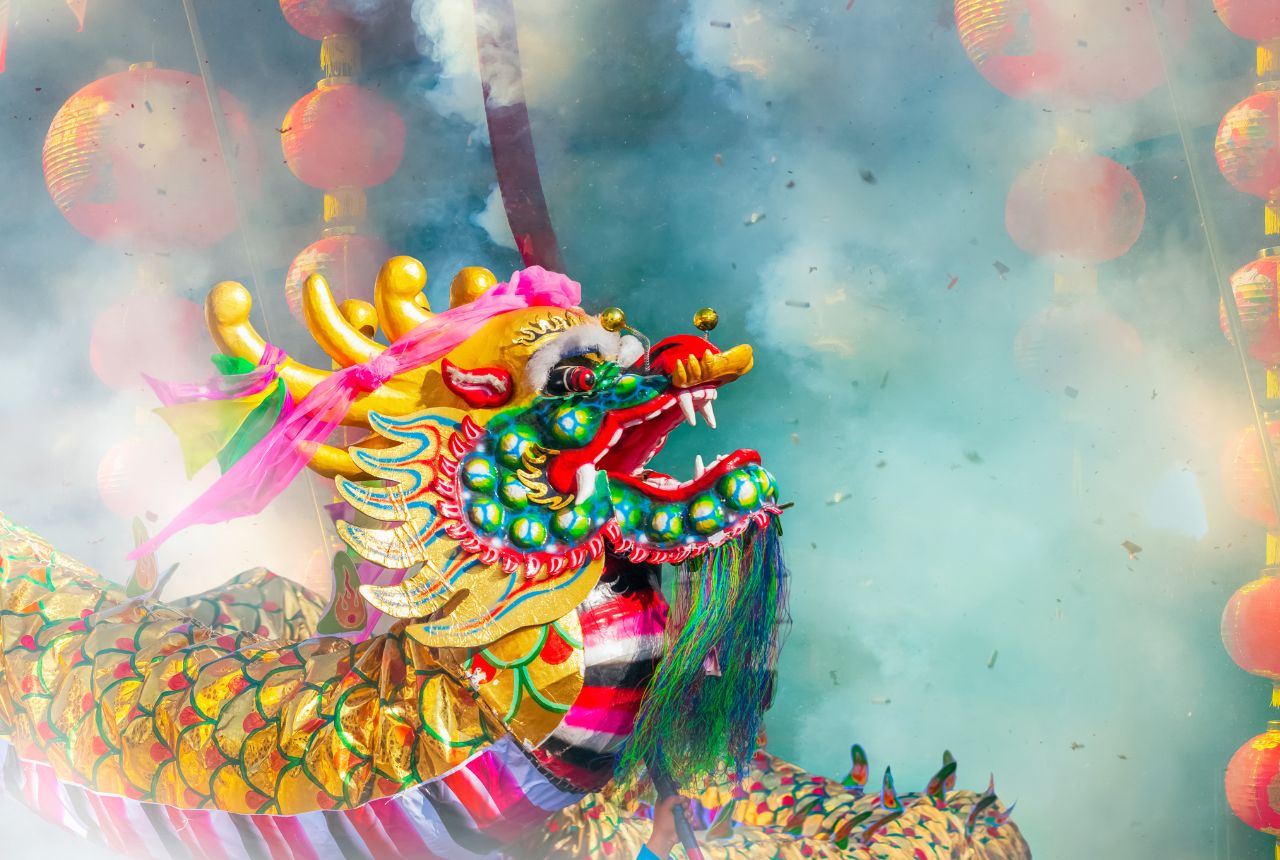What to Eat in Singapore’s Chinatown
What to Eat in Singapore’s Chinatown
Few places in Singapore capture the city’s essence quite like Chinatown. Tucked away just a few MRT stops from the modern business district, this neighbourhood is a lively collision of the old and new. Bright red lanterns hang above narrow streets, elderly residents play chess in the shade, and the aroma of sizzling woks drifts through the air, tempting both locals and visitors alike.
Chinatown is more than just a tourist stop—it’s a food destination in its own right. Here, you’ll find everything from century-old family recipes to modern reinterpretations of classic dishes. Whether you’re hunting down a cheap and cheerful hawker meal, indulging in Michelin-recommended eats, or sipping on an iced latte in a hip café, Chinatown is a microcosm of Singapore’s rich and ever-evolving food culture.
So, if you’ve ever wondered what to eat in Singapore’s Chinatown, consider this your ultimate guide.
A Neighbourhood Steeped in Flavour
Chinatown has always been a place where food tells stories. The neighbourhood grew alongside Singapore’s early Chinese immigrants, who brought with them recipes and flavours from provinces like Hainan, Fujian, and Guangdong. Over the decades, these dishes evolved—shaped by local ingredients, Malay and Indian influences, and Singaporeans’ love of bold, comforting flavours.
Walking through Chinatown today, you’ll still spot traditional shophouses selling herbal teas and pastries alongside sleek restaurants offering modern twists on Asian cuisine. The beauty of Chinatown’s food scene is its inclusivity—you don’t need deep pockets to eat well. A few dollars can get you a steaming bowl of laksa, while a short stroll might lead you to an award-winning restaurant.
Signature Local Dishes to Try
Any Chinatown food trail should start with Singapore’s signature dishes. These are the classics that define local dining culture, and many of them are done exceptionally well here.
Hainanese Chicken Rice
Often considered Singapore’s national dish, Hainanese chicken rice is deceptively simple. Tender poached chicken, fragrant rice cooked in chicken stock, and a side of chilli sauce—done right, it’s perfection. Maxwell Food Centre is home to the famous Tian Tian Hainanese Chicken Rice, which Anthony Bourdain once declared as “so fragrant and delicious that it can be eaten on its own.” Expect a queue, but also expect it to be worth the wait.
Char Kway Teow
A hawker favourite, char kway teow is wok-fried flat rice noodles tossed with egg, bean sprouts, Chinese sausage, and cockles. The best versions have that elusive “wok hei”—a smoky aroma imparted by high-heat cooking. Head to Chinatown Complex Food Centre, where several stalls have been serving this dish for decades, each with its own loyal fanbase.
Satay
Chinatown may be associated with Chinese food, but you’ll also find excellent Malay and Peranakan influences here. Satay—grilled skewers of marinated meat served with peanut sauce—is a must-try. Grab a plate from one of the satay stalls at the Chinatown Night Market, where the scent of charcoal-grilled meats fills the street after sundown.
Bak Kwa
If you’re visiting around Chinese New Year, you’ll see queues snaking outside shops selling bak kwa, a sweet and smoky barbecued pork jerky. Bee Cheng Hiang and Lim Chee Guan are two of the most famous names in Chinatown, but smaller family-owned shops also offer their own versions. A bite of bak kwa is chewy, sticky, and utterly addictive.
Laksa
Chinatown also delivers when it comes to Peranakan classics like laksa—a rich, coconut-based noodle soup with prawns or cockles. The spice is balanced by creamy coconut milk, and every slurp is both comforting and fiery.
Heritage Food Spots
One of the best ways to experience Chinatown’s food is to head straight for its hawker centres and traditional shops.
Maxwell Food Centre
Arguably the most famous hawker centre in Chinatown, Maxwell is a one-stop shop for Singaporean favourites. Beyond chicken rice, you’ll find stalls selling everything from oyster cakes to fish soup. It’s a great place to sample multiple dishes without breaking the bank.
Chinatown Complex Food Centre
This is Singapore’s largest hawker centre, with over 200 stalls. It’s less touristy than Maxwell and beloved by locals. Don’t miss the soya sauce chicken from Hawker Chan, the world’s first Michelin-starred hawker stall. Despite the global fame, it remains remarkably affordable.
Traditional Bakeries and Teahouses
For a taste of nostalgia, step into a traditional Chinese bakery. Tong Heng, located along South Bridge Road, is known for its diamond-shaped egg tarts, buttery crusts filled with silky custard. Meanwhile, shops selling herbal teas and medicinal soups reflect Chinatown’s roots as a place of wellness and sustenance for early immigrants.
Modern Twists on Tradition
Chinatown is not stuck in the past. In recent years, it has seen a wave of modern dining establishments that reinterpret Asian flavours for contemporary palates.
Michelin Bib Gourmand Gems
Aside from Hawker Chan, eateries like Liao Fan and Kok Sen Restaurant have earned accolades for their unique takes on local dishes. Kok Sen, for example, is famed for its big prawn hor fun, where wide noodles swim in a luscious gravy topped with giant prawns.
Hip Cafés and Bars
Amoy Street and Keong Saik Road—just bordering Chinatown—are now buzzing with hip cafés and bars. Here, you’ll find coffee shops serving single-origin brews alongside fusion menus offering everything from Sichuan-inspired brunch dishes to matcha croissants. It’s Chinatown with a modern, Instagram-friendly flair.
Contemporary Chinese Dining
Restaurants like Madame Fan and Yum Cha reimagine Chinese dining. Expect dim sum served with a twist, cocktail pairings, and chic interiors that contrast sharply with the hawker stalls just a street away.
Street Snacks and Sweet Endings
No Chinatown food adventure is complete without a snack (or three) picked up while wandering.
- Kaya Toast: This quintessential Singaporean breakfast of toasted bread, kaya (coconut jam), and butter is best enjoyed with kopi (local coffee) or teh (milk tea). Many traditional coffee shops in Chinatown still serve it the old-school way.
- Chinese Pastries: Bakeries here sell mooncakes, wife cakes, and red bean buns that make perfect edible souvenirs.
- Ice Desserts: On a hot afternoon, nothing beats bowls of chendol or ice kachang, colourful shaved ice desserts topped with syrup, beans, and jelly.
- Bubble Tea: For something modern and playful, bubble tea shops are scattered across Chinatown, offering everything from classic milk tea to fruit-based concoctions.
Practical Tips for Eating in Chinatown
- Timing Matters: Visit hawker centres outside of peak hours (around 12–2 pm) to avoid long queues. Dinner time can also get crowded, especially at popular stalls.
- Cash is King: While more stalls are now adopting e-payments, cash is still the safest bet at hawker centres.
- Sharing is Best: The portions at hawker stalls are generous and cheap. Going with friends means you can try more dishes without overstuffing yourself.
- Budget vs Splurge: You can easily spend less than S$10 for a filling hawker meal, or you can indulge in fine dining experiences that cost upwards of S$100 per person. Chinatown caters to all budgets.
- Explore Beyond the Main Streets: Don’t just stick to Pagoda Street or Smith Street. Wander into side lanes and you’ll discover hidden gems, from tucked-away dumpling shops to quirky dessert cafés.
A Taste of Singapore’s Identity
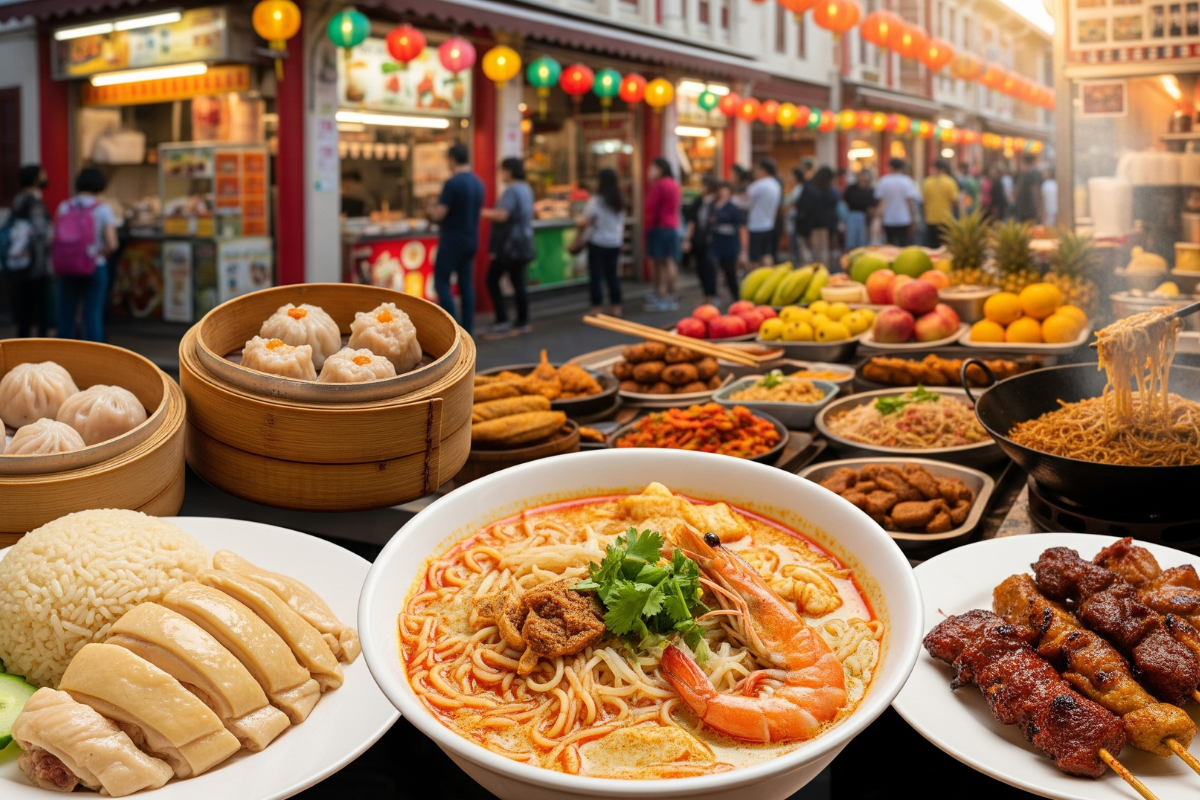
At its heart, Chinatown is not just about eating—it’s about understanding Singapore. Every stall, bakery, and restaurant tells a story of migration, adaptation, and creativity. It’s where the humble chicken rice stall shares the same neighbourhood as Michelin-starred eateries, where herbal tea shops stand next to bubble tea outlets.
To eat in Chinatown is to taste the city’s past and present all at once. It’s the comfort of a dish perfected over generations, alongside the thrill of a chef reimagining tradition for the future. And that’s what makes Chinatown such an essential stop for food lovers.
So, the next time you find yourself in Singapore, don’t just stroll through Chinatown for the lanterns and temples. Come hungry, bring friends, and be prepared to eat your way through one of the most flavourful neighbourhoods in the world.

